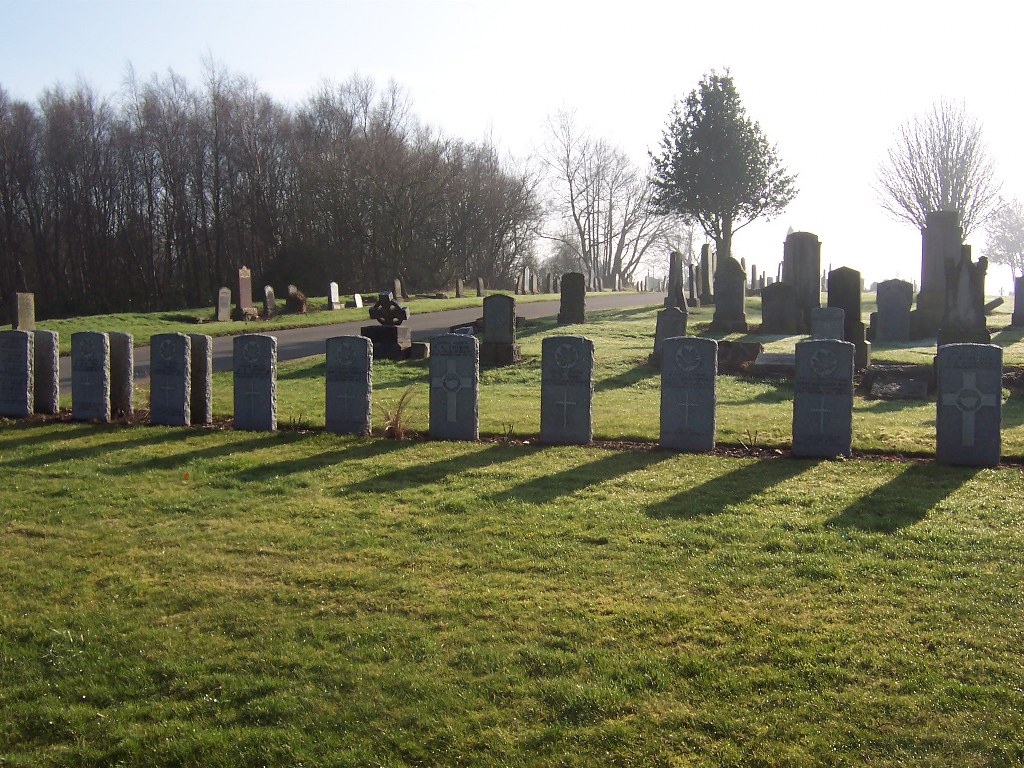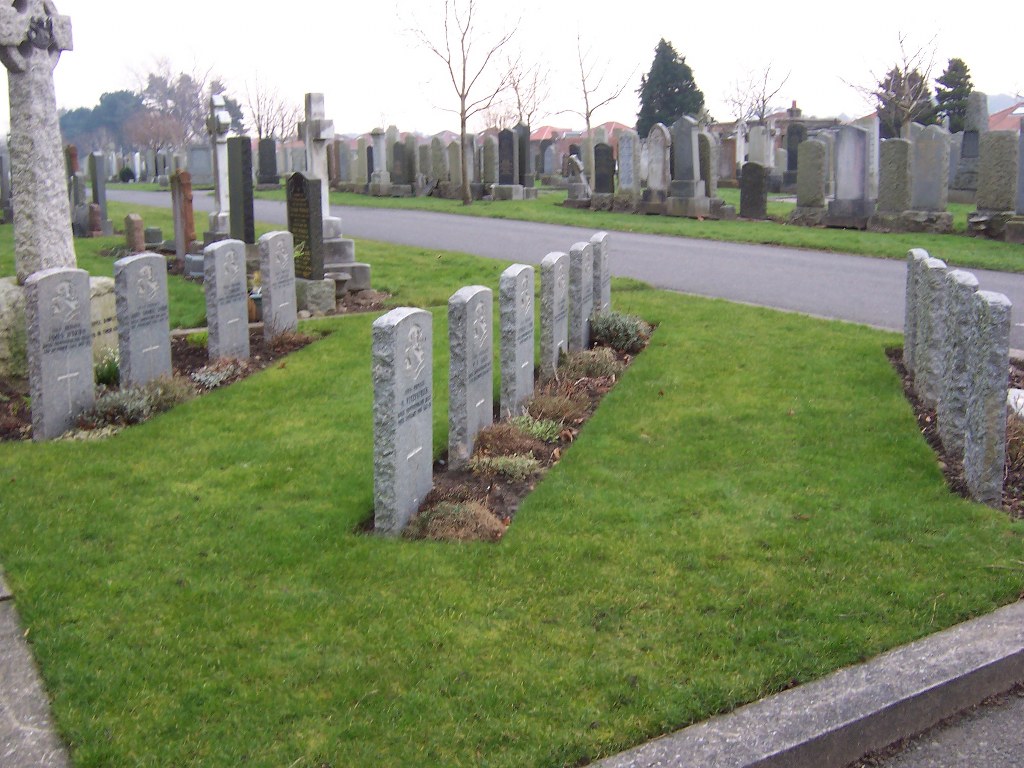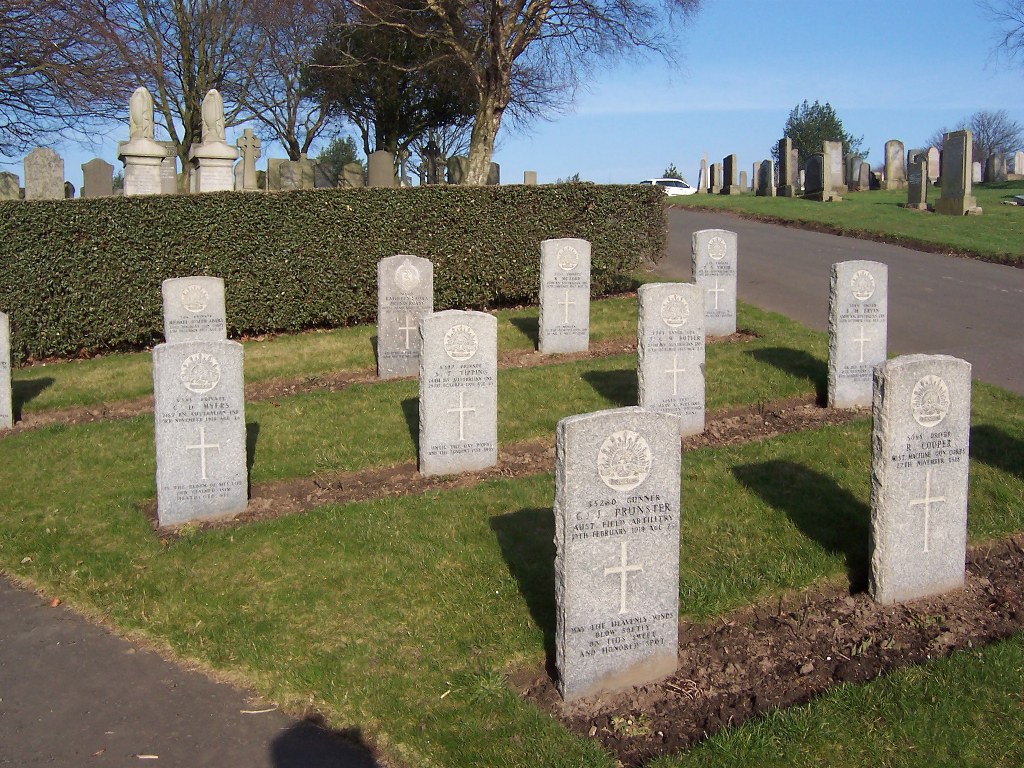Glasgow Western Necropolis
- Country United Kingdom
- Total identified casualties 493 Find these casualties
- Region Glasgow
- Identified casualties from First & Second World War
- GPS Coordinates Latitude: 55.89911, Longitude: -4.28173
Our War Graves, Your History
Discover more about the history of Glasgow (Western) Necropolis and plan a visit through our Our War Graves, Your History project.
Find out morePlease note:
Improvement work is being carried out to Australian Plot at The Western Necropolis in Glasgow due to incorrect levels of the headstones.
The existing headstones will be temporarily removed and stored carefully at the rear of the plot and new foundations will be made for the existing headstones which will enable us to achieve the correct levels in the area .
This work will be carried out carefully and with respect and will mean a significant improvement in this unique plot, further horticultural improvements will be carried out after the work is finished and improvements to existing turf will be carried out in Autumn 2021 .
Location information
By Road From the M8 exit at Junction 16 and head north on A 879 Craighall Road. Travel 2.5 miles on this road leading into Saracen Street and Balmore Road . Turn left into Skirska Street then second right on Tresta Road. Through the housing estate the entrance to Western Necropolis is on right hand side past the entrance to St Kentigerns Cemetery at the end of the road. By Public transport Gilhochil Rail Station is two minutes’ walk from the main cemetery entrance. Trains from Queen Street Station travelling to Anniesland stop at this station.
Visiting information
The Western Necropolis is a large cemetery complex north of Glasgow City Centre. Adjoining this site are the following large cemeteries : Glasgow Lambhill and Glasgow St Kentigerns Cemetery, all three are separate but adjoin each other. Glasgow Garnet Hill Hebrew Burial Ground and Glasgow Crematorium Memorial is also at this site.
Vehicle access is prohibited to all sites in the evenings with gates closing at 17.00hr in winter and 18.00hr in the summer, pedestrian access is still possible.
History information
During the two world wars, the United Kingdom became an island fortress used for training troops and launching land, sea and air operations around the globe. There are more than 170,000 Commonwealth war graves in the United Kingdom, many being those of servicemen and women killed on active service, or who later succumbed to wounds. Others died in training accidents, or because of sickness or disease. The graves, many of them privately owned and marked by private memorials, will be found in more than 12,000 cemeteries and churchyards.
Glasgow was one of the ports of embarkation for the British Expeditionary Force in 1914 and several military hospitals opened in the city during the First World War, including the 3rd and 4th Scottish General (1,200 beds each), and the Merryflats War Hospital (500 beds). Battalions of a number of Scottish regiments had their headquarters at Glasgow during both wars, most notably the Highland Light Infantry. The Clydeside shipyards were targeted by German bombers during the Blitz, and Glasgow suffered a particularly ferocious attack on the night of 13/14 March 1941 when many civilians and servicemen were killed.
GLASGOW WESTERN NECROPOLIS contains 359 First World War burials, many of them grouped together in Section P, with a small group of Australian graves in Section N. A screen wall near the main entrance carries the badges of the regiments represented in Sections P and H. The 124 Second World War burials are scattered throughout the cemetery, although there are two among the earlier war graves in Section P. Also in this group are two inter-war service burials and two German war graves.
GLASGOW CREMATORIUM stands within the Western Necropolis and a memorial in the garden of rest commemorates one servicemen of the First World War and 72 of the Second World War whose remains were cremated there.




